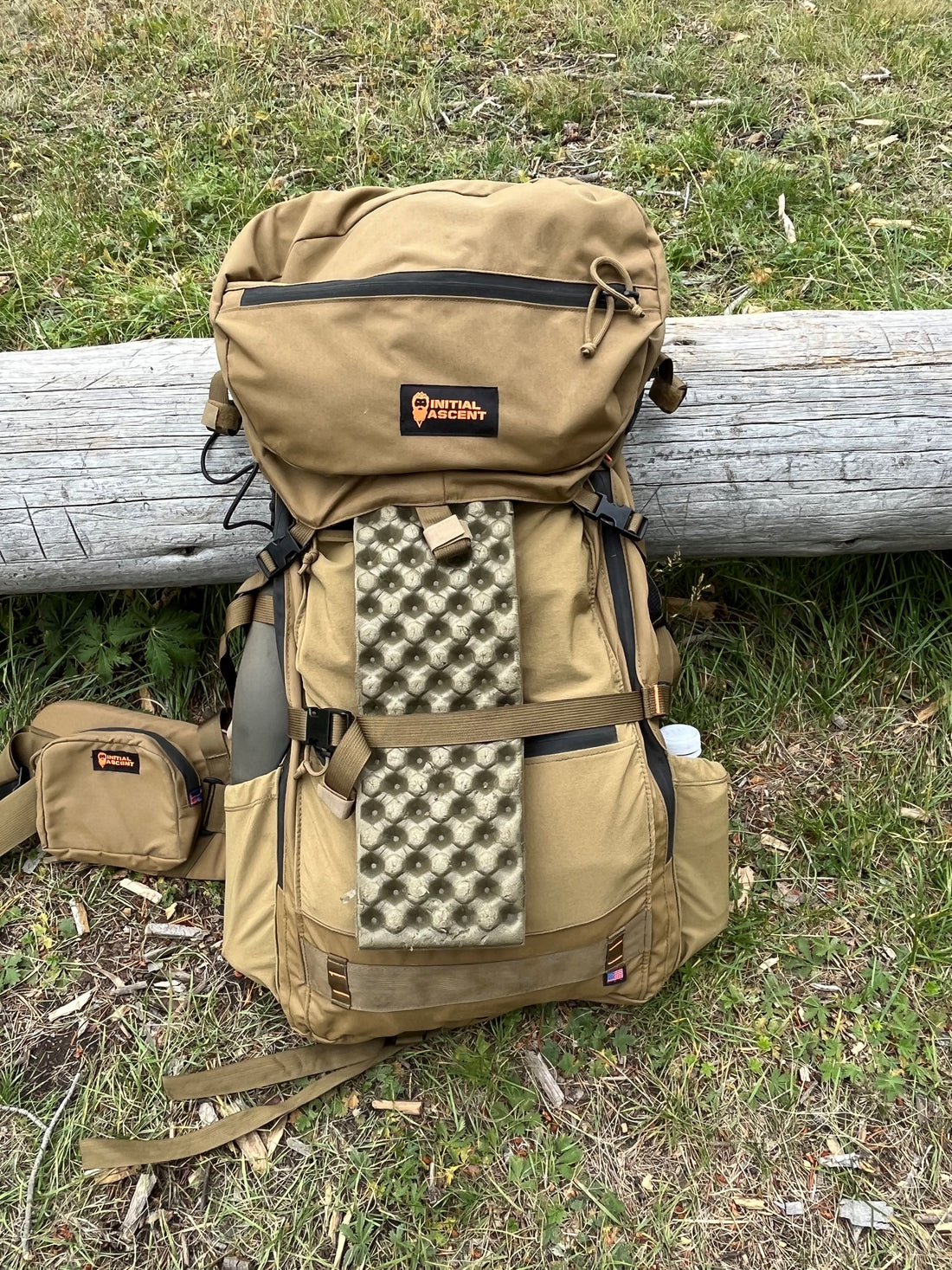
Zach Bowhay's Elk Pack Dump
Zach BowhayBefore every elk season, I analyze my equipment and one of the things I do is go over all the things I have in my pack for elk hunting. Every year I pick it up and think it feels heavier than the year before. This could be the case, but with gear getting lighter all the time, I am guessing the more likely scenario is I am getting older and want to carry less on my back.
So, before every season, I take everything out of my pack and see what pieces of gear I can upgrade to be lighter or better and see what gear I could possibly ditch permanently. Some years I might find something I can get new that helps with the overall weight and efficiency of my hunting set up, but to be honest most years I just put it all back in my camp and go hunting.
Pack
I have used a lot of packs over the years and have my likes and dislikes, but my packs require certain features. I want my pack to be large enough to carry all my day-to-day gear with the ability to keep my gear organized. I also like to have lightweight bags like the IA Pack Sacks. Another must, is a bag that will detach from the frame and allow me to carry meat between the frame and bag of the pack. This season I am carrying the Initial Ascent IA2K pack, this set up fits all my needs for what I consider an ideal elk hunting day pack.

Non- negotiable
There as some things that I carry at some times, but I also have a list of things that will be with me on every hunt, regardless of how for or long I will be going. Let’s break them down by category.
Clothing
Lightweight down jacket. You never know when a story might hit, or the temps might drop. They are lightweight and pack down small and I see no reason not to have it with me.
Beanie, lightweight gloves and warmer set of down gloves or something else packable like Kuiu Kutana gloves.
Rain Gear- I carry an ultralight set of rain gear that stuffs small but can handle a heavy downpour. The weather changes fast in the mountain and you must be ready for anything.
Soft Shell Jacket or vest- On backpack hunts I don’t always carry a vest or softshell jacket, but most day hunts I do.

Survival and First Aid
A good lightweight first aid kit is a must. Make sure it has plenty of supplies to take care of all minor cuts, wounds and any blisters you might get.
Fire starting materials- Lighter, Firestarter, flint and steel.
Extra Flashlight- Dark Energy rechargeable lighter that is also a flashlight.
Kill kit:
Game bags- Large enough to handle the biggest animal you could potentially harvest.
Paracord- Enough to hang quarters from a meat pole or limbs.
Knife and Sharpener- A quality fixed blade knife like the Saddle Mountain Skinner by Benchmade. I carry a folder in my pocket or bino harness as my utility knife for everyday task and for initial cuts of hide on the elk, the fixed blade only gets used for breaking down a bull. A Guided Field Sharpener by Worksharp for touch ups and maintenance while breaking down a bull.
Flagging Ribbon- Half roll
Lightweight Saw- I used to always carry a lightweight saw, but nowadays I generally don’t. Reason being is I European mount all my bulls. If I still skull capped elk, I would still carry the saw to cut skulls off to save weight on pack outs.

Archery Essentials
Extra Broadheads, Judo point, extra nocks- A few extra broadheads just in case, a judo point to resight in bow if need be and a couple for arrows.
Allen Wrench that fits screws on accessories and bow parts.
Spare release extra nocks
In the lid
In the lid or top pouch of my pack I always have the things I might need quickly.
Head Lamp
Battery charger- I use a cheap model I found that has cords attached that will charge my phone, Inreach, and has a USB port so I can charge cameras and whatever else I may want to charge.
Small pouch on my lid I store my license and tags and my trusty good luck charm.
Toilet paper and wet wipes.
Food and Water
I generally carry a Nalgene bottle or a Powerade botte that I can refill each day. I also carry a small lightweight water bottle that I can scoop water from streams or springs then drink straight from it.
I carry a gallon bag or some other type of bag with plenty of food to stay out all day long.
Elk Calls
Bugle tube
Extra diaphragm calls and external reed cow calls
Depends on the Hunt
Spotting Scope and Tripod- If I am hunting thick timber or places I won’t be glassing far off distances, I will leave the spotter and tripod in the truck to save weight. If I think I may do a lot of long-range glassing and locating, it will be in the pack.
Trekking Poles-Depending on terrain I might carry my trekking poles. If I am in steep country where I might have steep downhill packs with elk quarters, I have mine along.

Evaluate
Each hunter needs to evaluate the things they have in their pack. Find the pack that matches your individual needs and fill it with the essentials you need for your style of hunting. Each of us might be slightly different, but I encourage you to have at bare minimum what you need to stay warm, dry, fed, hydrated and capable of breaking down and caring for an animal after a kill. Good luck out there.
Zach Bowhay is known as a hunter and writer who has successfully hunted many species all across the western states and beyond. Specifically he is highly regarded in the western hunting community as an expert in DIY elk hunting on public lands. For 15 years he has been a well-published writer, sharing his love of the outdoors and expertise in both gear and tactics through his writing as well as video and photos. When not spending time with his wife and three kids he can be found roaming the mountains of the west in the pursuit of adventure.
Find him on Instagram
